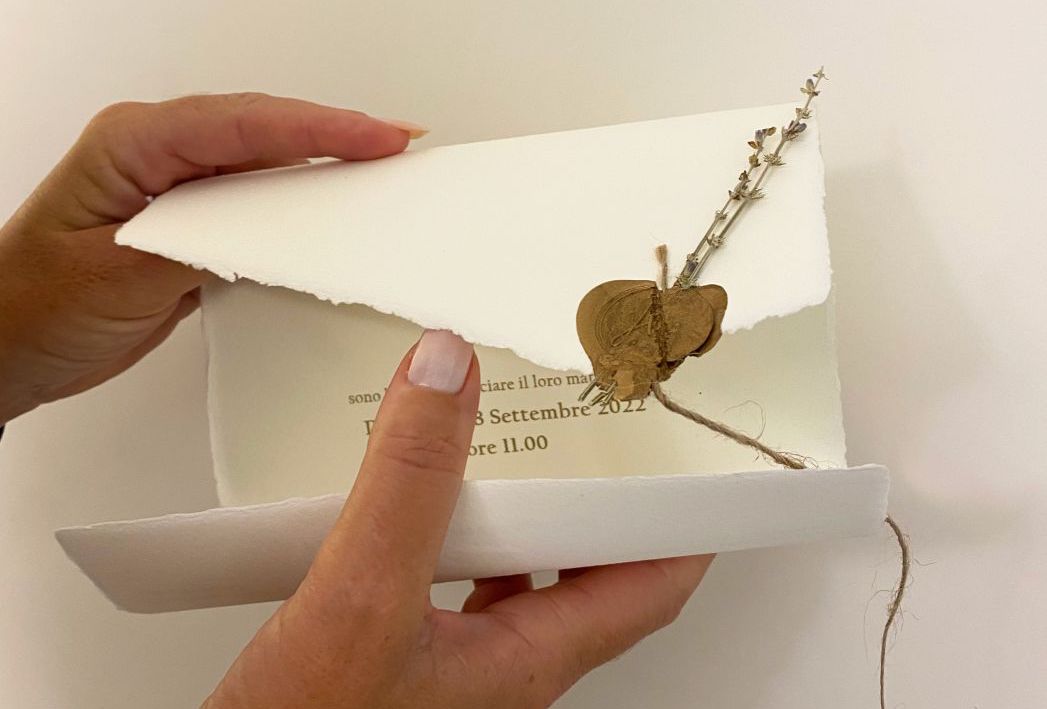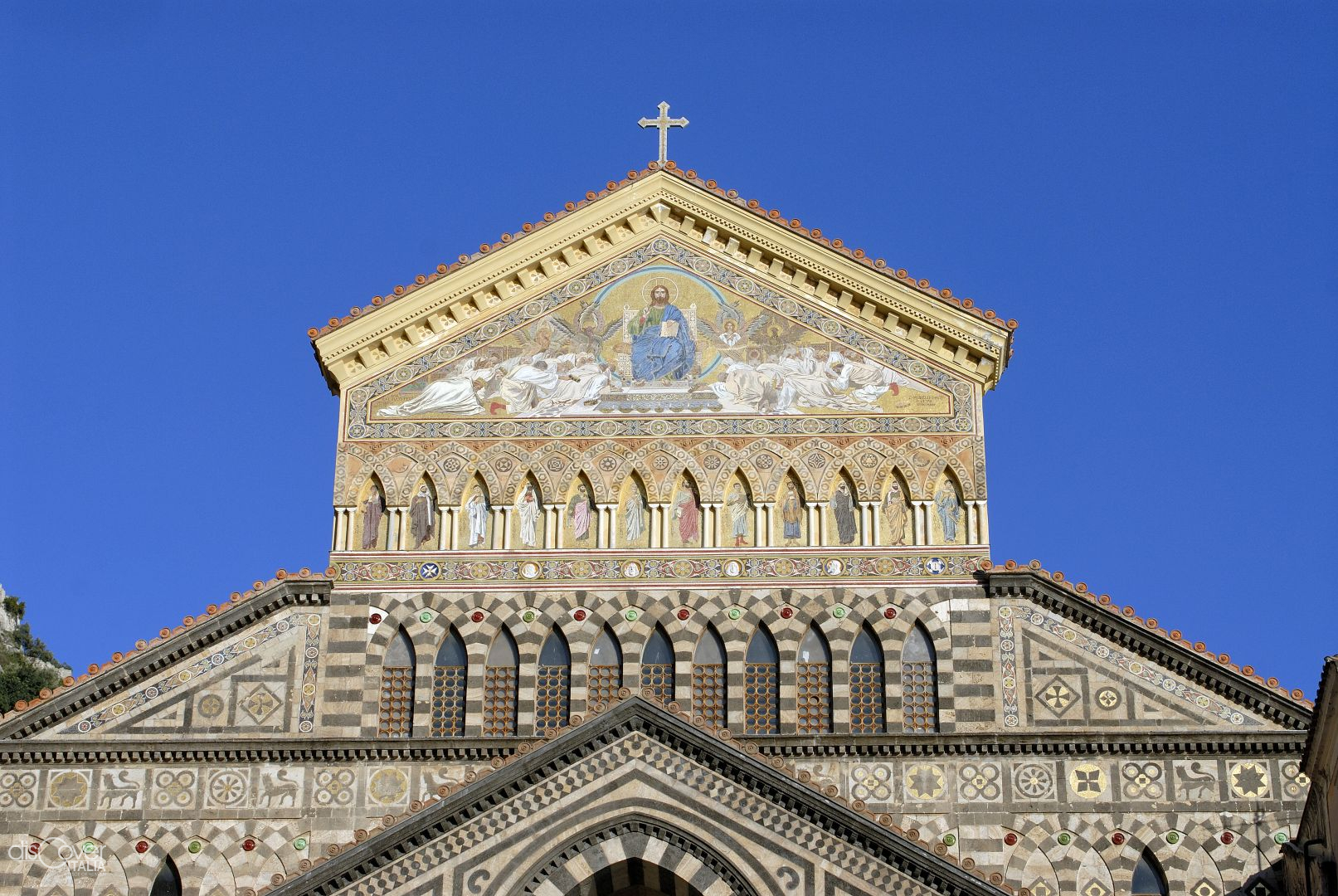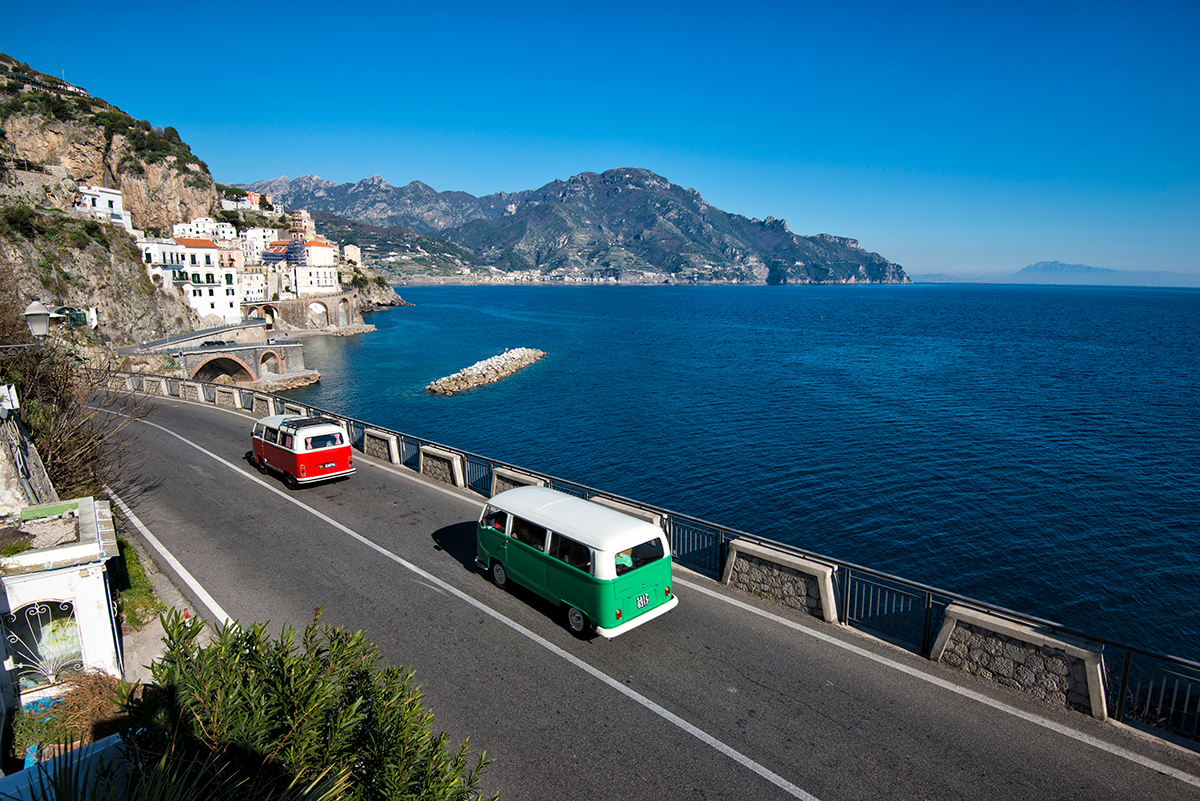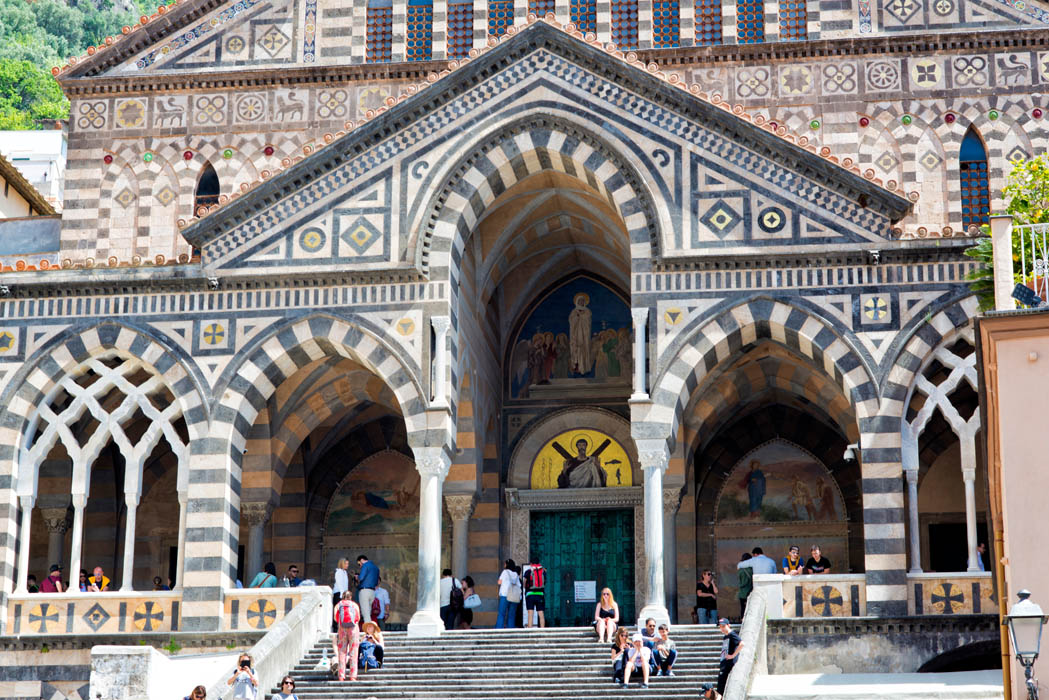It is known as Fiord
 and it has the characteristics of it, but it is not the glaciers and the sea which have sculpted it, but a torrent, the Schiato, which from Agerola runs along the mountain to the point where it has incessantly dug to meet the sea.
and it has the characteristics of it, but it is not the glaciers and the sea which have sculpted it, but a torrent, the Schiato, which from Agerola runs along the mountain to the point where it has incessantly dug to meet the sea.
There, in a narrow and deep inlet, there is the splendid Furore, terra furoris, when the voice of the stormy sea resounds powerfully between the high rock walls. An impregnable garrison of the territory of the Republic of Amalfi, its small but welcoming beach inside the fiord has always offered a safe and secure landing place. The seaside village with its coloured houses which traditionally kept the fishing tools on the lower floor, frames that characteristic internal lido. Those restored monazzeni are the hub of the tourist hospitality in the old town, which can be accessed by walking down the rock face from the bridge of the state road, which crosses the fiord at a height of thirty meters. Ideal condition to make Furore one of the annual stops of the spectacular Marmeeting, the World high diving championship, taking place on the first Sunday of July.
The particular beauty of the seaside village with its quiet internal beach, which the sun kisses in the afternoon, has attracted several personalities from the world of culture and cinema over time, such as Federico Fellini and Roberto Rossellini, who lived in one of the small houses, the Villa del Dottore, and he also shot the film Amore, with Anna Magnani, his partner at that time who stayed in the nearby Villa della Storta. It was in Furore that Rossellini received from Ingrid Bergman the famous letter which marked the beginning of the end of the relationship with Nannarella. After the end of that love story, she didn’t return to her favourite Furore. The village paid tribute to her with the Anna Magnani Museum, located in her old house.
Furore inhabitants didn’t live only on fishing. In the valley inside the fiord, exploiting the water of the torrent Schiato, there were two mills rose and two paper factories. There were also the drying room “Stenditoio” so that paper sheets could dry and the Calcara, for working the stone used to build the houses. What remains of that so characteristic production site is today valorised by the Ecomuseum of the fiord, which is located in the old mill and is equipped with a herbarium and a celestial hall. And in the fiord there is also the rock chapel of Santa Caterina d’Alessandria.
But Furore is not only the village on the beach. Since ancient times, it has developed in an upper part, which has exploited every strip of available land for the terraces on which lemons, vines, hazelnut trees are successfully cultivated, up to the borders with Praiano and the territory of Agerola. Sporadic houses emerge from the sides of the hill, so much so that it is defined “the nonexistent village”. Houses that stand out for their bright colors and the walls covered with murals by the author, as many as a hundred, hence the other definition of "painted village”. Some localities take the name of the families who lived there. The oldest was the one of the Summonte family, to which Pietro belonged, the famous member of the Pontaniana Academy, author of the first historical-artistic guide of Naples.
Furore is a hamlet outside the wall of Amalfi: it counts three districts: Gatta, housing the beautiful Giardino della Pellerina, Cicala and Ciuccio. In the district of Cicala, there is the twelfth-century church of Sant’Elia Profeta, enlarged in 1474, with a single nave, in which you can admire a triptych from 1492 by Angelo Antonello da Capua with, in the centre, the Madonna with Child and on the sides Saint Bartolomeo the apostle and Sant’Elias the prophete, and a painting of the Madonna del Carmine from 1620. From there, one of the most suggestive paths of the area starts, the Walk of Love (Passeggiata dell'Amore), which reaches the Praiano viewpoint. The oldest church, which once stood where the Casanova farmhouse was once and lost, is the parish of San Giacomo, built on an eleventh-century pre-existing one and enlarged in the 14th century, period from which the frescoes of the crypt date back. Marble funerary urns carved from the Roman era are kept in Sant’Elia, in San Giacomo and in the parish church of Saint Michel the Archangel of the 13th and 14th century. The rocky site of Santa Barbara is of great interest, originated in the 10th century from a chapel dedicated to the Saint by a community of Byzantine hermits to which another church was added, dating from the 12th and the 13th century.










Comments powered by CComment